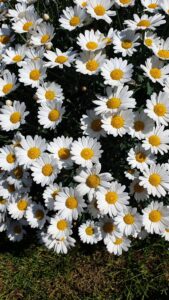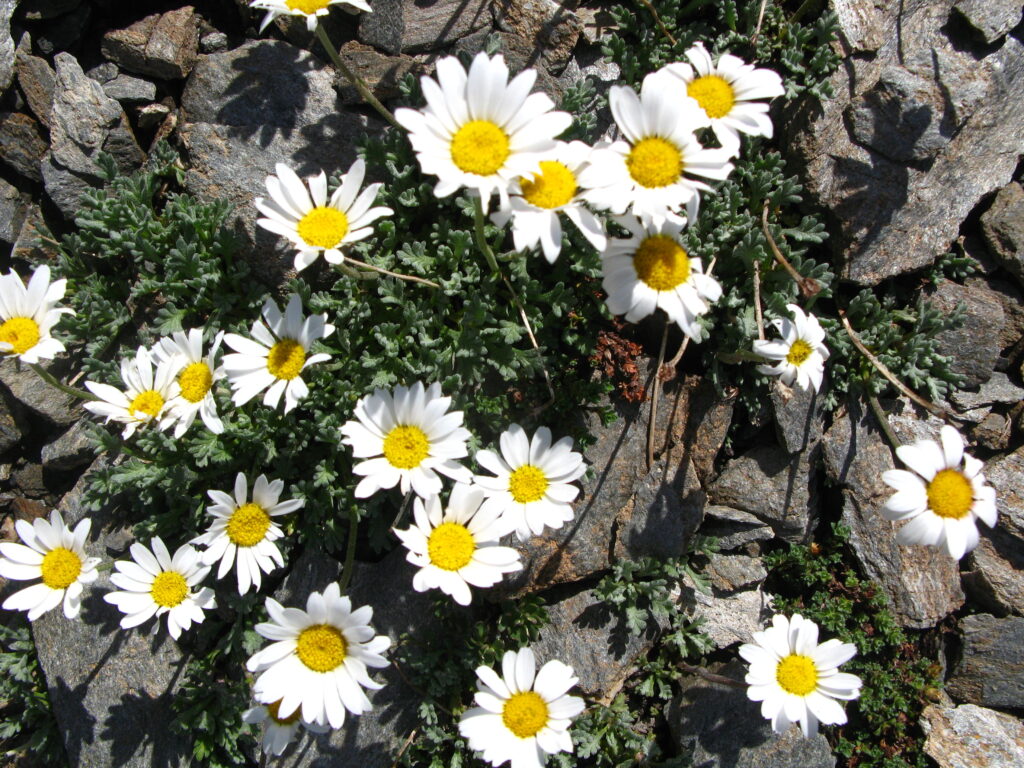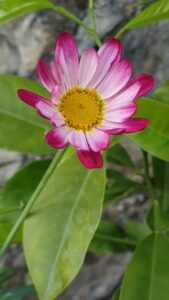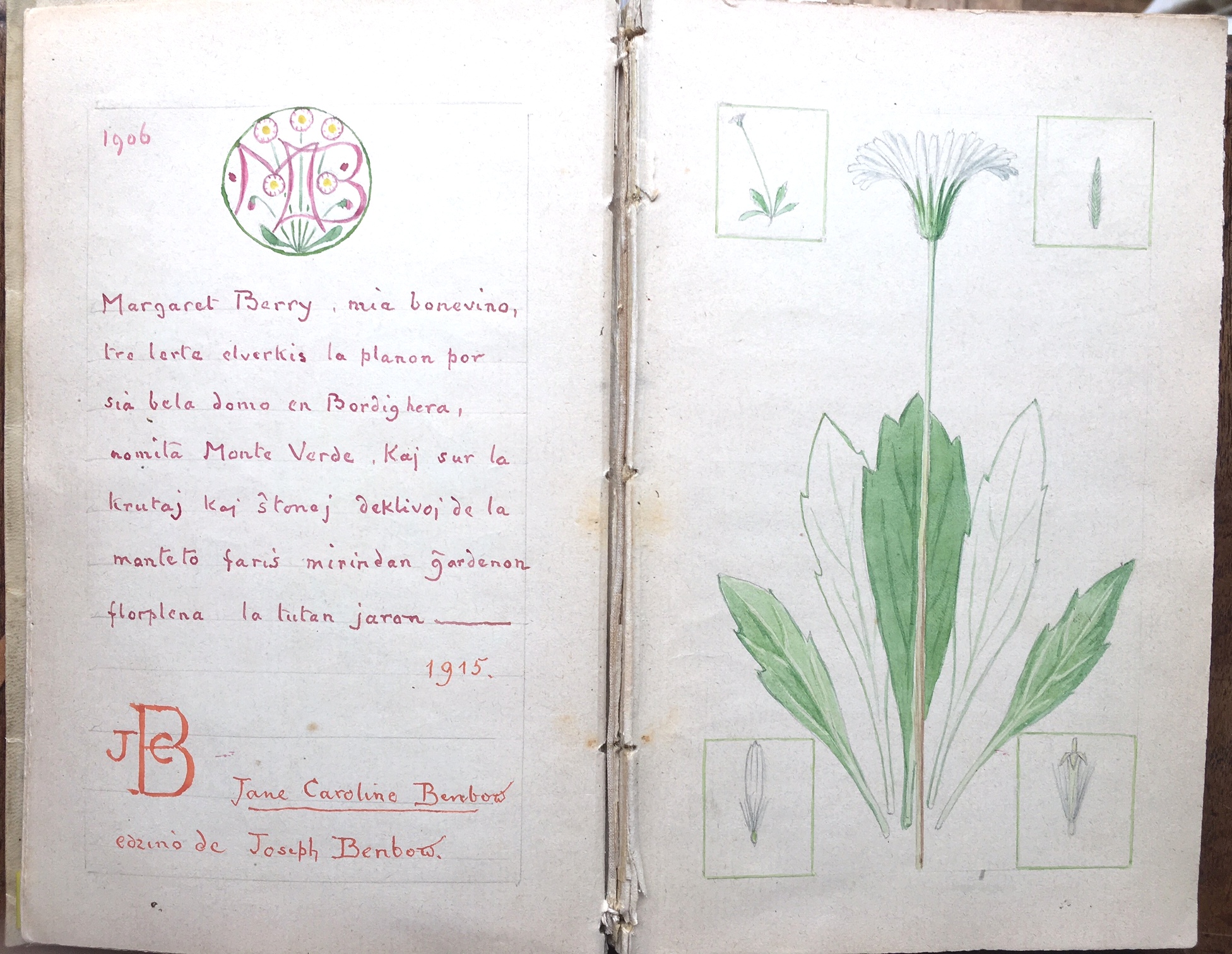
A decorative floral design from his Book of Guests in Esperanto written and drawn by Clarence Bicknell between 1910 and 1918. Clarence Bicknell wrote a page in Esperanto about each visitor and decorated the page with a botanical drawing, often developing the guest’s initial into a monogram. In the Bicknell Collection curated by Marcus Bicknell (info@clarencebicknell.com).
Here he plays tribute to one of his best friends and helpers Margaret Berry, the wife of his nephew Edward Berry who lived nearby in Bordighera. Clarence wrote for Margaret in 1906: “Margaret Berry, my niece by marriage, cleverly designed the plan for her lovely house in Bordighera, called Monte Verde, and on the uneven and stony slopes of the hill created an amazing garden full of flowers throughout the year.”
Clarence’s humour comes through in a subtle way. The image is of the common daisy whose translation in Italian is Margherita and in French is Marguerite… clearly a flower named after his favourite Margaret!
A common daisy, called in the past also Herb Margaret, scientific name Bellis perennis L. has various species which are in flower almost all the year and which grow from sea level to the hills up to 1800m on meadows and uncultivated or waste lands. In Italian it is known as ‘margheritina’, the little daisy.




Leucanthenum vulgare Lam. is the common daisy reaching the subalpine level, called in Italian margherita.
The Margherita alpina or the Leucanthemopsis alpina L. grows at higher altitudes, up to 2000 metres in the Alps. The leaves are very different from common daisies.
The daisy has inspired poets across the ages:
‘Above all flouris in the mede
Than I love most those flouris
white and rede;
Soche that men call daisies
In our towns ‘. Geoffrey Chaucer, (1342-1400)
‘ Wee, modest, crimson-tippet flower’
Robert Burns 1759-1796)
‘ Daisies, those pearled Areturi of the earth,
The constellated flowers that never set’.
Percy Bysshe Shelley (1792–1822)
‘Daisy, Daisy, give me your answer do
I’m half crazy all for the love of you
It won’t be a stylish marriage
I can’t afford a carriage
But you’ll look sweet upon the seat
Of a bicycle built for two’
Harry Dacre (1857–1922)
Book of Guests in Esperanto by Clarence Bicknell will be published in full colour in summer 2022. You can read more and download a transcript at https://clarencebicknell.com/the-book-of-guests-in-esperanto-text-published/
This is No.57 in our series on works by Clarence Bicknell. We thank Elisabetta Massardo for her contributions to the text and for the photos.
